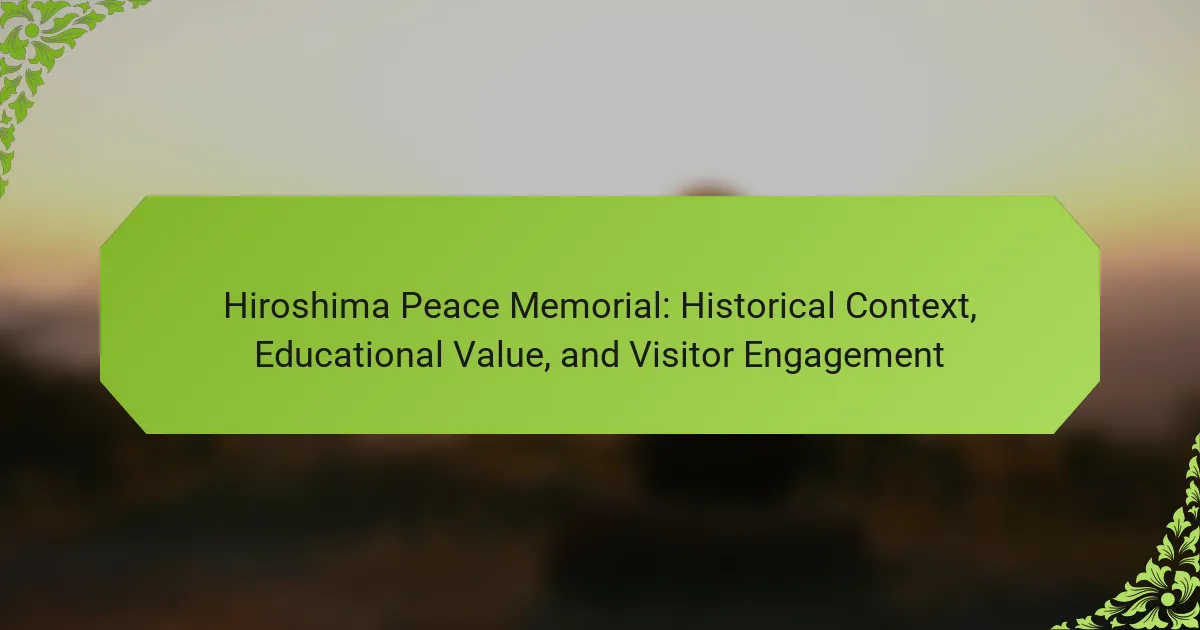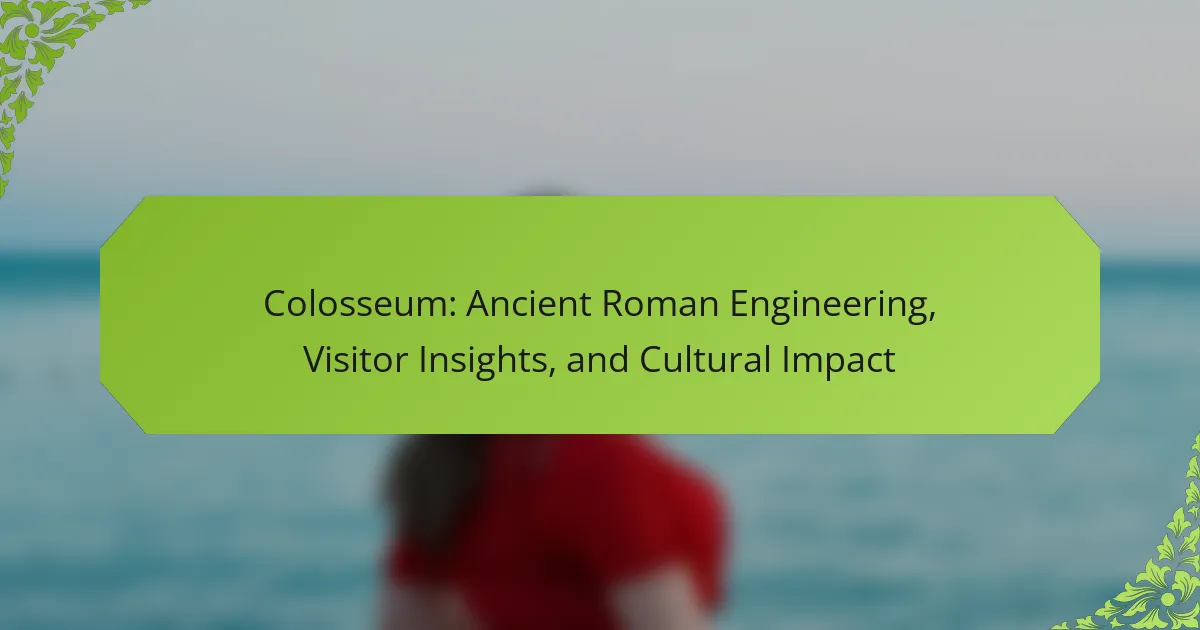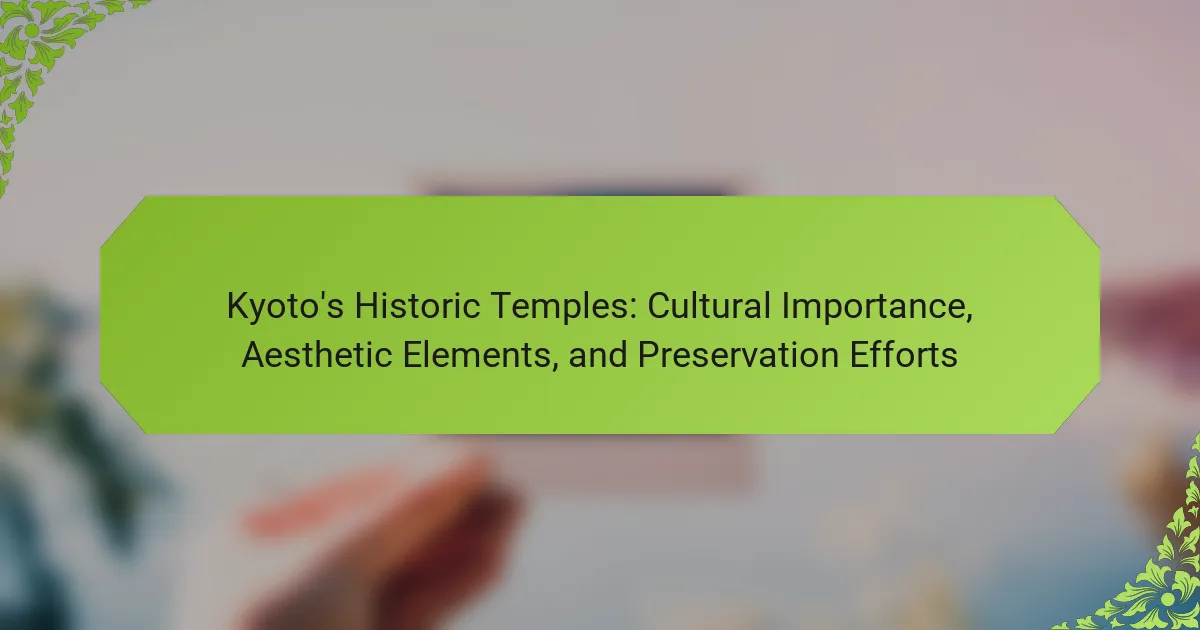The Hiroshima Peace Memorial plays a crucial role in promoting awareness of nuclear disarmament and peace. This article explores its historical context, educational value, and visitor engagement strategies. It highlights the memorial’s unique significance, interactive exhibits, and the impact of educational programs on fostering empathy and understanding.
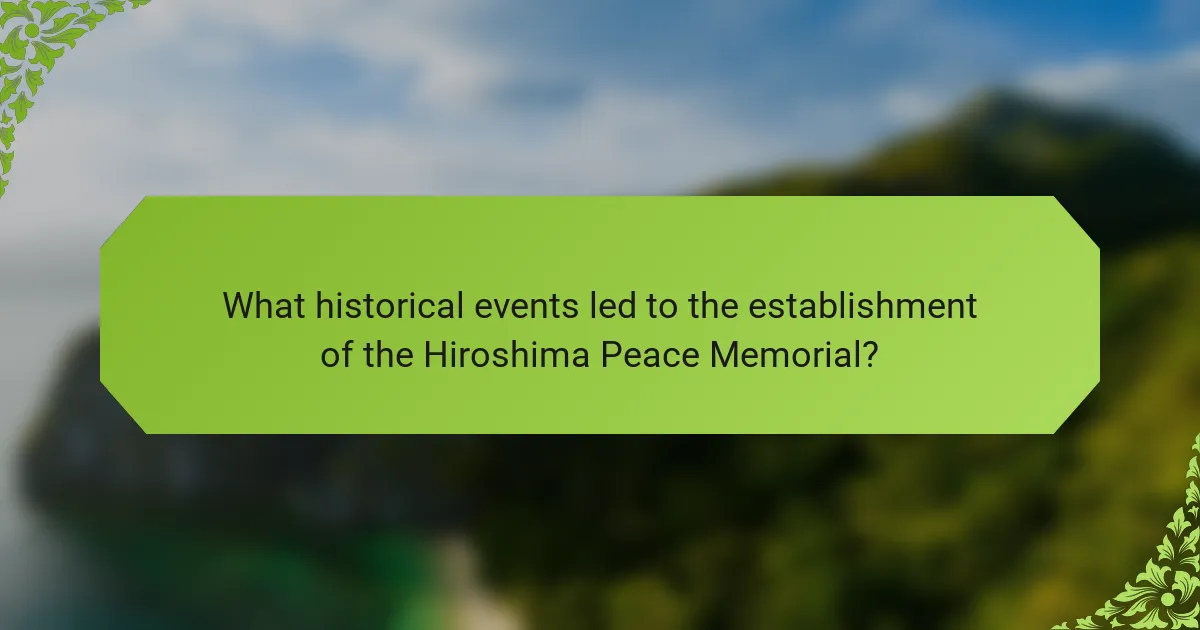
What historical events led to the establishment of the Hiroshima Peace Memorial?
The Hiroshima Peace Memorial was established following the atomic bombing of Hiroshima on August 6, 1945, which resulted in immense destruction and loss of life. This event highlighted the need for peace and the importance of remembering the consequences of nuclear warfare. The memorial serves as a reminder of the past and promotes global peace efforts. Its educational value lies in raising awareness about the impacts of war and advocating for disarmament. Visitor engagement is fostered through exhibitions, guided tours, and commemorative events that encourage reflection and dialogue on peace.
How did the atomic bombing influence the design of the memorial?
The atomic bombing significantly influenced the design of the Hiroshima Peace Memorial by emphasizing themes of peace, resilience, and remembrance. The memorial’s architecture incorporates elements that reflect the devastation of the bombing while promoting a message of hope and reconciliation. For example, the preserved ruins of the Genbaku Dome serve as a stark reminder of the destruction, contrasting with the surrounding gardens that symbolize renewal. The layout encourages reflection and education about the consequences of nuclear warfare, fostering a commitment to peace among visitors. Additionally, the memorial’s design includes interactive exhibits that engage visitors emotionally and intellectually, enhancing its educational value.
What significant milestones mark the memorial’s history?
The Hiroshima Peace Memorial’s history is marked by significant milestones including its designation as a UNESCO World Heritage Site in 1996, the opening of the Hiroshima Peace Memorial Museum in 1955, and the annual Peace Memorial Ceremony held on August 6. These events highlight the memorial’s role in promoting peace and educating visitors on the consequences of nuclear warfare. The memorial’s establishment in 1954 further solidified its purpose as a symbol of resilience and a commitment to peace.
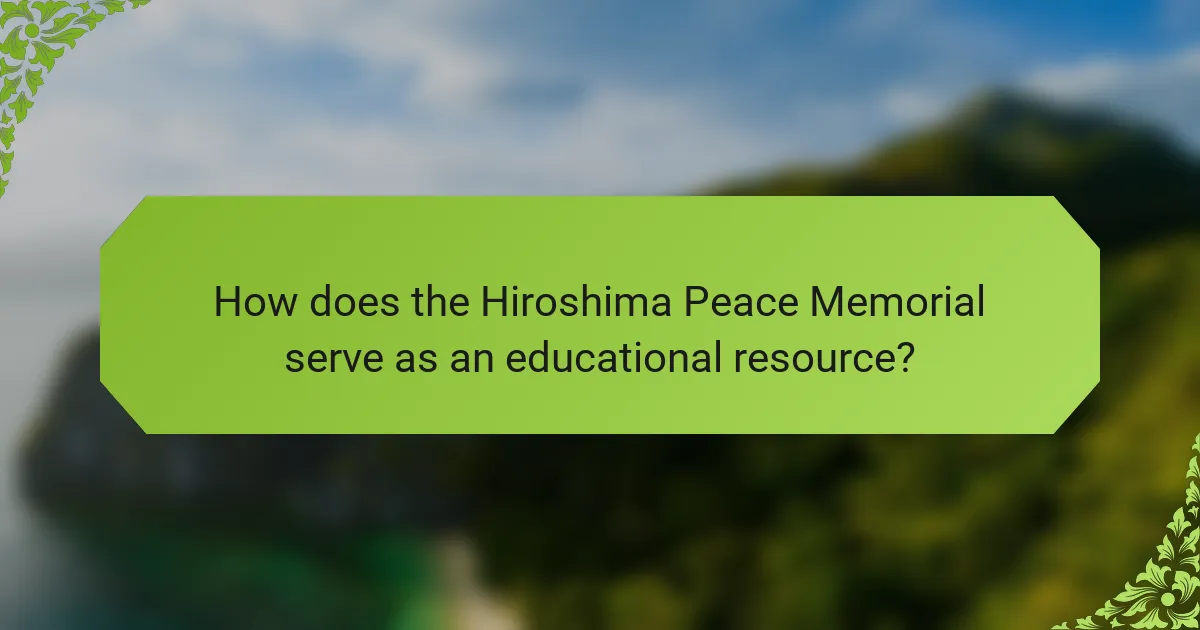
How does the Hiroshima Peace Memorial serve as an educational resource?
The Hiroshima Peace Memorial serves as a vital educational resource by promoting awareness of nuclear disarmament and peace. It offers historical context through exhibits detailing the events of August 6, 1945, and their aftermath. Visitors engage with personal stories of survivors, fostering empathy and understanding. Educational programs and guided tours enhance learning experiences, making the memorial a unique space for reflection and dialogue about the consequences of war.
What types of educational programs are offered at the memorial?
The Hiroshima Peace Memorial offers various educational programs, including guided tours, workshops, and lectures. These programs aim to promote peace education and awareness about the consequences of war. The memorial also hosts exhibitions that provide historical context and engage visitors in meaningful discussions. Additionally, educational resources are available for schools to enhance learning experiences related to peace and history.
How do visitors engage with the educational materials?
Visitors engage with the educational materials at the Hiroshima Peace Memorial through interactive exhibits, guided tours, and multimedia presentations. These approaches enhance understanding of the historical context and promote reflection on peace. Visitor feedback indicates that hands-on activities significantly increase emotional connection and learning retention. Additionally, educational workshops encourage deeper discussions about the implications of nuclear warfare and the importance of peace advocacy.
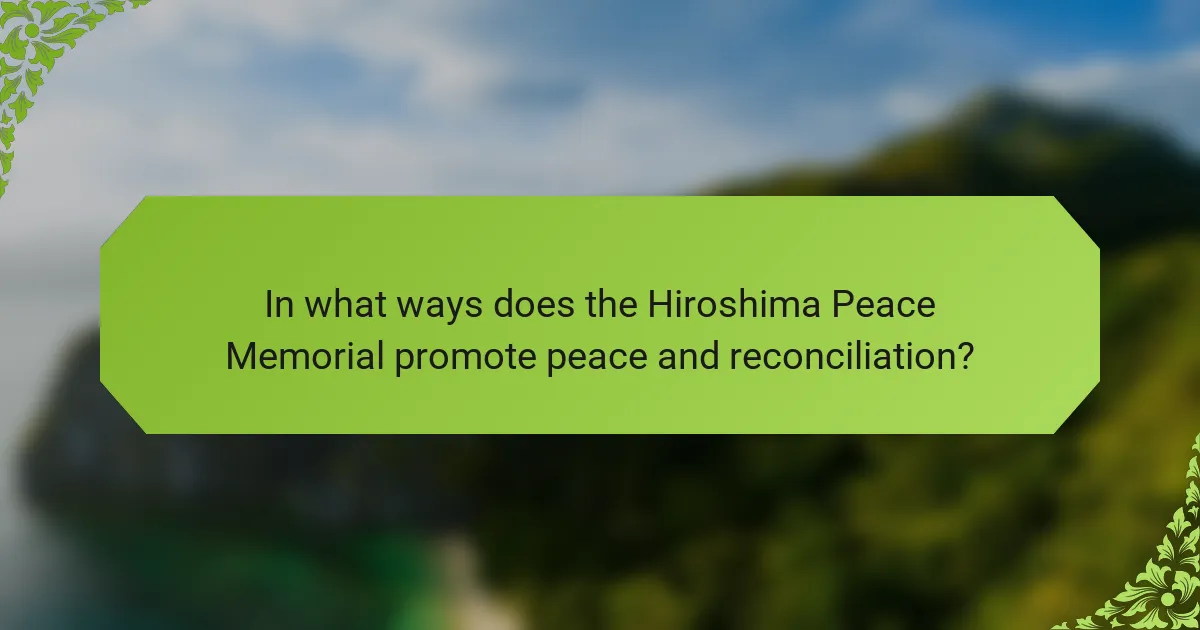
In what ways does the Hiroshima Peace Memorial promote peace and reconciliation?
The Hiroshima Peace Memorial promotes peace and reconciliation through education, remembrance, and global dialogue. It serves as a poignant reminder of the consequences of war, fostering discussions about nuclear disarmament and peacebuilding. The memorial attracts over one million visitors annually, encouraging them to reflect on the past and advocate for a peaceful future. Educational programs and exhibitions enhance understanding of the events of 1945, emphasizing the importance of empathy and cooperation among nations.
What role do memorial events play in fostering dialogue?
Memorial events, like the Hiroshima Peace Memorial, foster dialogue by promoting reflection on historical events and encouraging discussions about peace. They serve as platforms for sharing personal stories and collective memories, which can lead to deeper understanding and empathy among diverse audiences. Educational programs associated with these events enhance awareness of the consequences of war, reinforcing the importance of peace initiatives. As a result, such memorials play a crucial role in shaping societal values and promoting global dialogue on conflict resolution and reconciliation.
How does the memorial collaborate with international organizations?
The Hiroshima Peace Memorial collaborates with international organizations to promote peace and nuclear disarmament. These partnerships enhance educational programs and global outreach initiatives. For instance, the memorial engages with UNESCO, facilitating cultural exchanges and awareness campaigns. Additionally, it participates in various international conferences, fostering dialogue on peacebuilding. This collaboration amplifies the memorial’s impact, reaching diverse audiences worldwide.
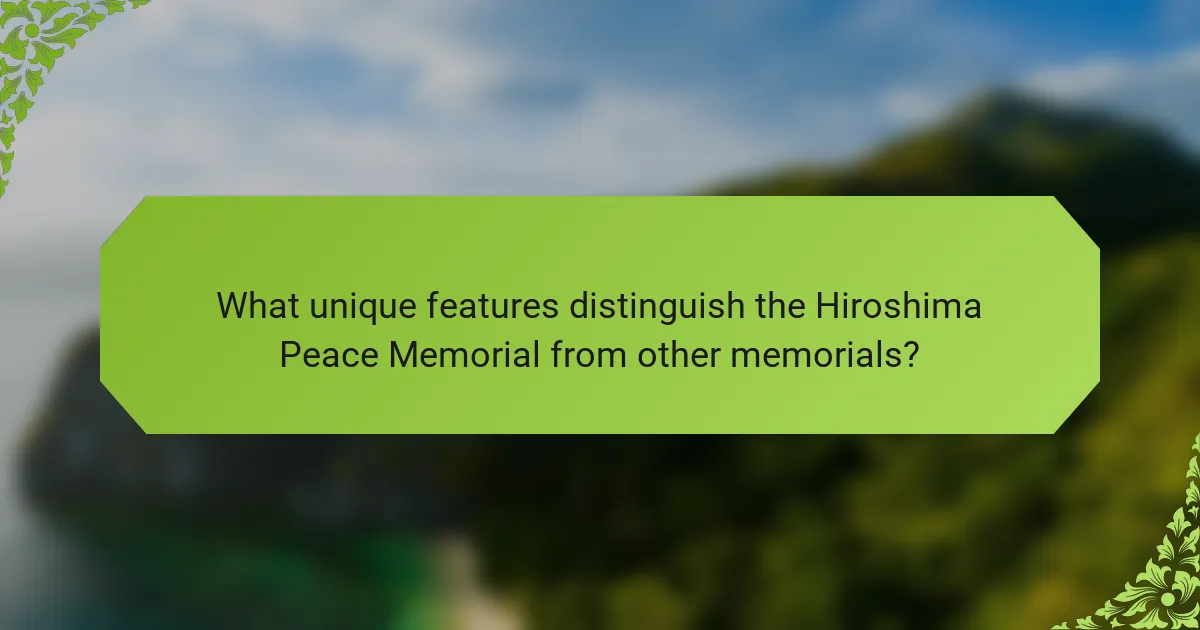
What unique features distinguish the Hiroshima Peace Memorial from other memorials?
The Hiroshima Peace Memorial is distinguished by its unique historical significance, architectural design, and educational impact. Unlike other memorials, it stands as a poignant reminder of the atomic bombing and promotes peace. Its preservation of the original ruins emphasizes the tragedy of war and the importance of nuclear disarmament. The memorial’s interactive exhibits engage visitors, fostering a deeper understanding of the consequences of violence and the value of peace.
How does the architectural style reflect its purpose?
The architectural style of the Hiroshima Peace Memorial embodies its purpose of remembrance and education. Its design reflects resilience, symbolizing hope and peace after devastation. The use of minimalist forms emphasizes solemnity, allowing visitors to focus on the memorial’s message of peace. Unique attributes, such as the preservation of ruins, serve as a poignant reminder of the past, reinforcing the memorial’s educational value.
What are the rare artifacts housed within the memorial?
The Hiroshima Peace Memorial houses several rare artifacts that symbolize the impact of the atomic bombing. These include personal belongings of victims, original photographs, and remnants of buildings. Each artifact provides unique insights into the human experience during and after the bombing, emphasizing the memorial’s educational value. Notable items include a charred lunchbox and a melted watch, both serving as poignant reminders of that tragic day.
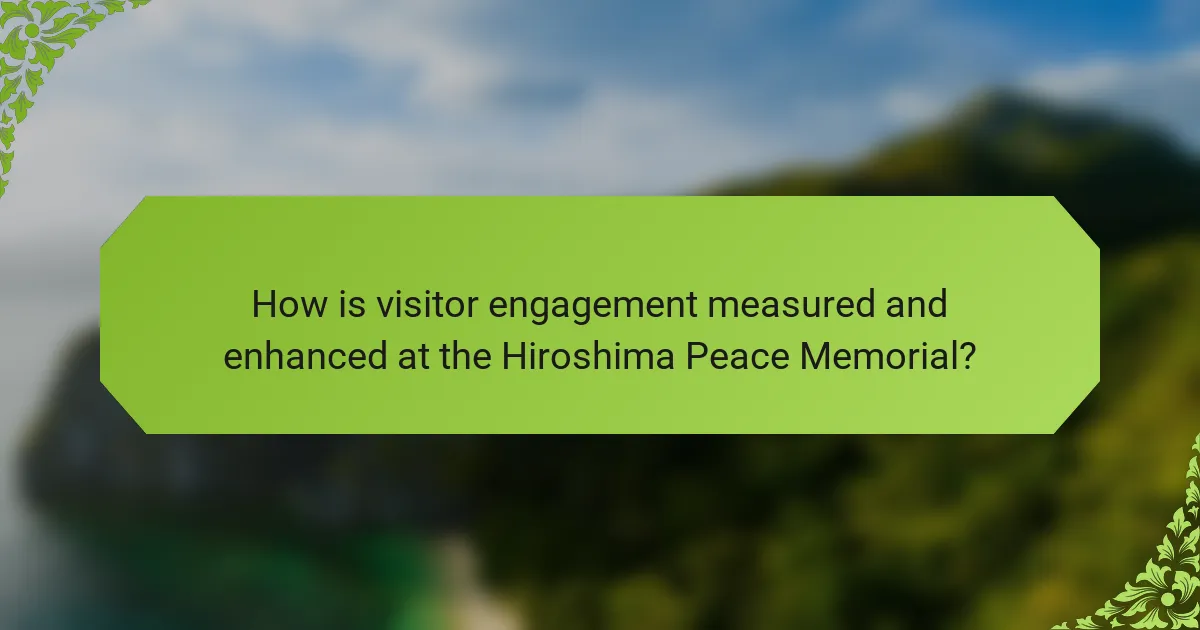
How is visitor engagement measured and enhanced at the Hiroshima Peace Memorial?
Visitor engagement at the Hiroshima Peace Memorial is measured through visitor surveys, attendance statistics, and interactive exhibits. Enhancements include educational programs, guided tours, and digital resources. These approaches foster deeper understanding of the memorial’s historical significance. Engaging visitors through immersive experiences increases their connection to the content and mission of the memorial.
What feedback mechanisms are in place for visitors?
The Hiroshima Peace Memorial has several feedback mechanisms for visitors. Surveys are conducted regularly to gather visitor opinions on their experiences. Comment boxes are available throughout the site for immediate feedback. Additionally, online platforms allow visitors to share their thoughts and suggestions. These mechanisms help improve visitor engagement and enhance educational value.
How do digital tools enhance the visitor experience?
Digital tools significantly enhance the visitor experience at the Hiroshima Peace Memorial by providing interactive and educational features. These tools include virtual reality tours, augmented reality applications, and mobile guides that deepen understanding of historical context. For instance, virtual reality experiences allow visitors to immerse themselves in historical events, fostering emotional connections. Additionally, mobile apps offer real-time information and personalized content, enhancing engagement and learning. These innovations not only facilitate a deeper appreciation of the memorial’s significance but also cater to diverse visitor preferences, making history accessible and compelling.
What best practices can be implemented to improve visitor engagement?
To improve visitor engagement at the Hiroshima Peace Memorial, implement interactive exhibits and guided tours. These practices enhance understanding of the historical context and educational value. Incorporating multimedia presentations can also captivate visitors. Additionally, hosting events and workshops fosters community involvement and deepens emotional connections to the site.
